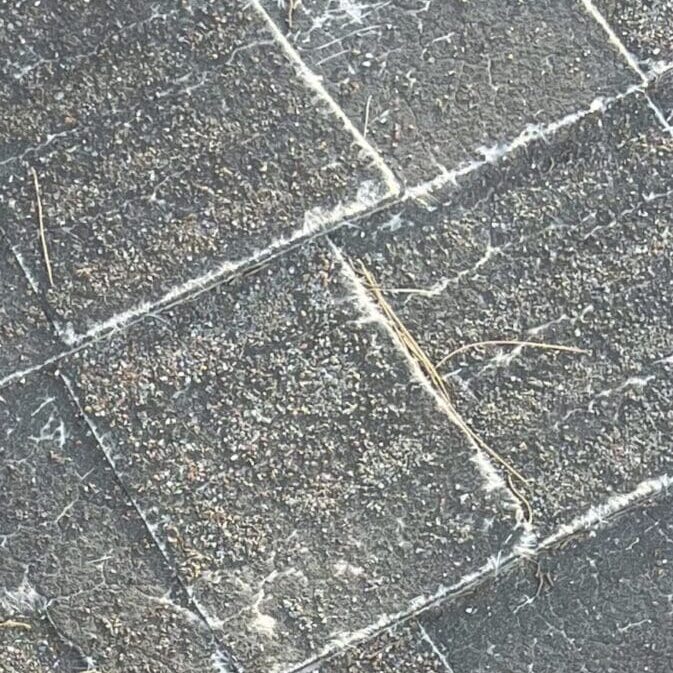For a fully functioning house, all parts have to be in tip top shape. A roof is one of the most important parts of a home. It keeps rain, wind, sun, and other elements off of the people and furnishings inside. Here are some roof maintenance tips to keep your house safe and looking good. Regularly inspecting your roof is a home maintenance checklist item.
Trees overhanging a roof
When trees overhang a roof, leaf and plant debris accumulate on the roof’s surface. Regularly removing debris from the roof does the following: Prolongs the roof’s lifespan and prevents deterioration of the roof material. Keeps the structure looking clean. Prevents bugs and other pests from living in the undisturbed plant debris.

It is wise to walk around your house once a month to see what needs repairing. Loose roof tiles pose a physical danger and are an accident waiting to happen. There are two additional maintenance items in this photo. The palm tree overhanging the roof needs to have its dead fronds cleaned, and there is an opening at the roof line where pests (rats, termites, wasps, bees, etc.) can enter the structure.
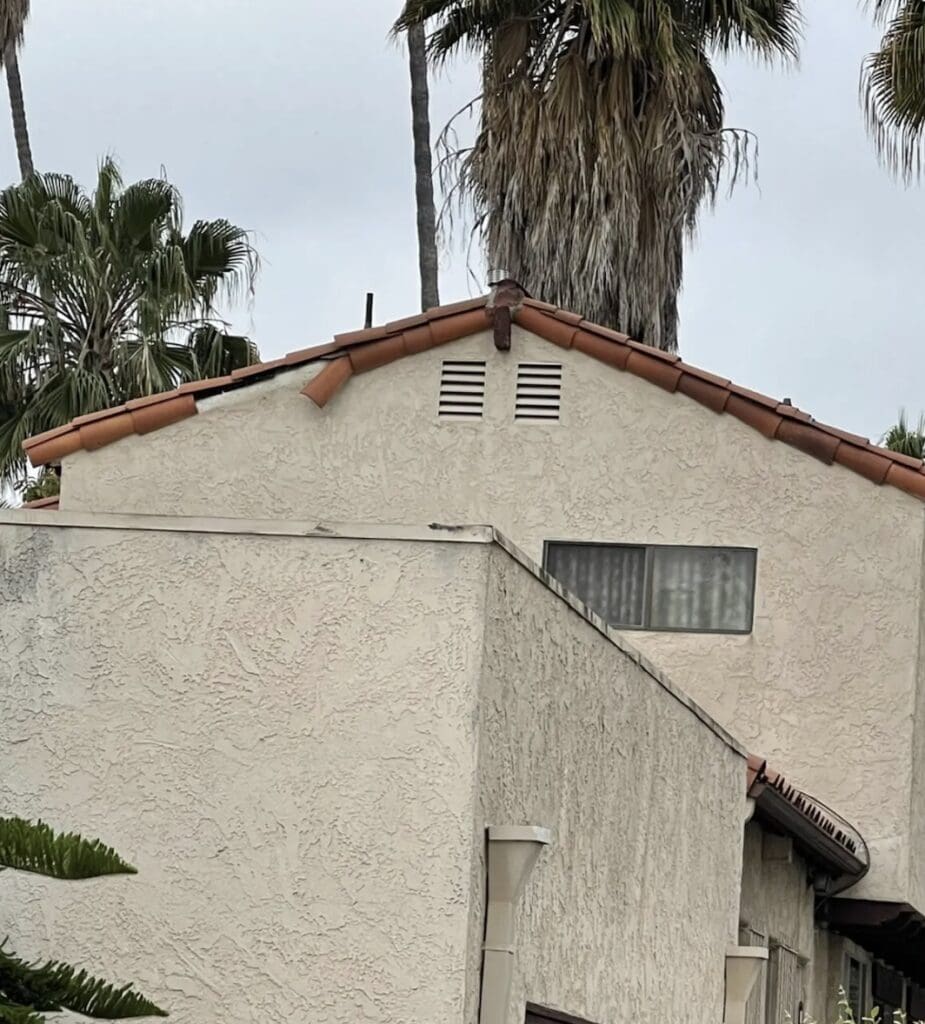
Keep trees and plants from growing onto your roof or home. Trees connecting to your house allow pests direct access to the upper part of your home. Meet regularly with your gardener or landscaper to discuss trimming trees and shrubs so they don’t provide pests access to your structure.
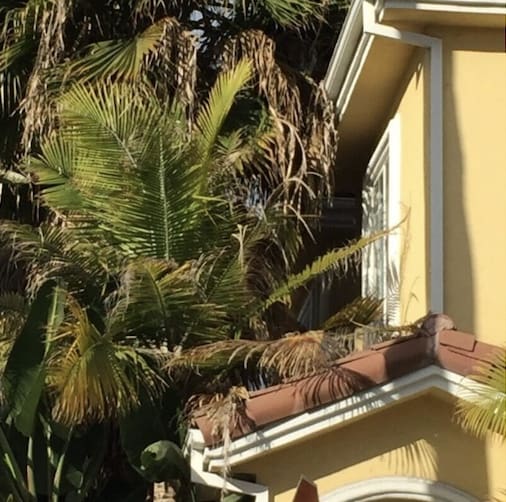
Pictured below is a worn out asphalt shingle roof. Asphalt shingles are the most popular type of roofing material used in Los Angeles. They are designed with a lifespan of 20-25 years. When a roof wears out, it lets water penetrate the structure which leads to interior damage. Protect your home by inspecting for signs of roof wear and either repair them, apply a restorative coating over it, or replace the roof if it is beyond its lifespan.
Reasons to replace a worn out roof:
Prevent Leaks
As shingles age, they crack or curl, allowing water to seep underneath. Replacing a worn-out asphalt shingle roof prevents leaks and protects your home from water damage.
Improve Energy Efficiency and Safety
Worn-out roofs contribute to higher energy bills by allowing hot air to escape in the winter and cool air to escape in the summer. By replacing your roof, you improve your home’s energy efficiency and lower your energy bills. An old roof can be a safety hazard, particularly in areas with high winds or heavy snowfall. By replacing your roof, you can ensure the safety of your family and your property.
Enhance Curb Appeal and Property Value
A new roof improves the look of your home and enhances its curb appeal. In addition to improving curb appeal, a new roof increases your property value. Homebuyers will pay more for a home with a new roof because they know it requires less maintenance.
When needed, a new roof is a wise investment that will protect your home, enhance its appearance, increase its value, and ensure your family’s safety.

Plant Overgrowth on Garage
A garage roof is just as important as a main structure roof. Pictured here is a garage with ivy, trees and shrubs growing on the roof, stucco and eaves. Protect your garage roof and structure by cutting plants away and by removing plant debris from roofs and rain gutters. Plants growing on a roof cause damage by rooting, moisture trapping, and the rodents that set up in the clutter that the plants produce. All plants should be removed from this garage and any damage repaired.

Keep Roof Seams Clean
Pictured from above, and looking down, is a roof valley flashing (roof seam) full of leaves. When roof seams are clogged, your roof doesn’t function properly. The inability of your roof to shed water causes interior leaks or rotting of the metal flashing itself–expensive repairs. Keep your roof clean. Remove leaves and other debris that prevent proper water drainage.
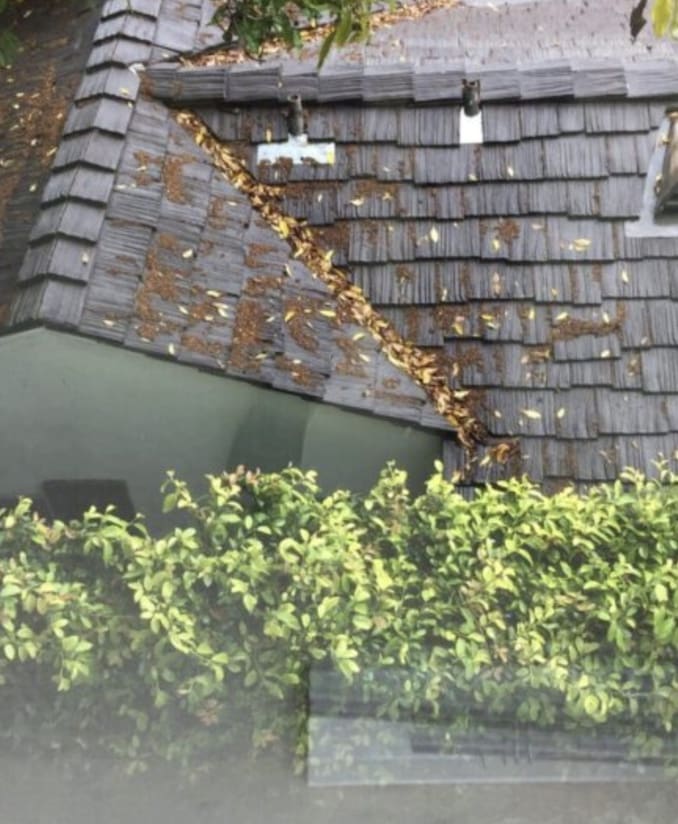
Regularly Scheduled Roof Cleaning
Prolong the life of your roof with Regular Maintenance & Cleaning. Pictured here is a house with clogged rain gutters, scattered leaf debris on the roof, and tree branches touching the roof. Clean and inspect your roof at least twice a year. Remove all debris from the roof and rain gutters. Check the flashing around roof jacks, skylights, and chimneys. Check roofing material for cracks and reseal them. Cut tree branches away from your house so they don’t touch your roof as it enables rodents and crawling insects easy access to your attic.
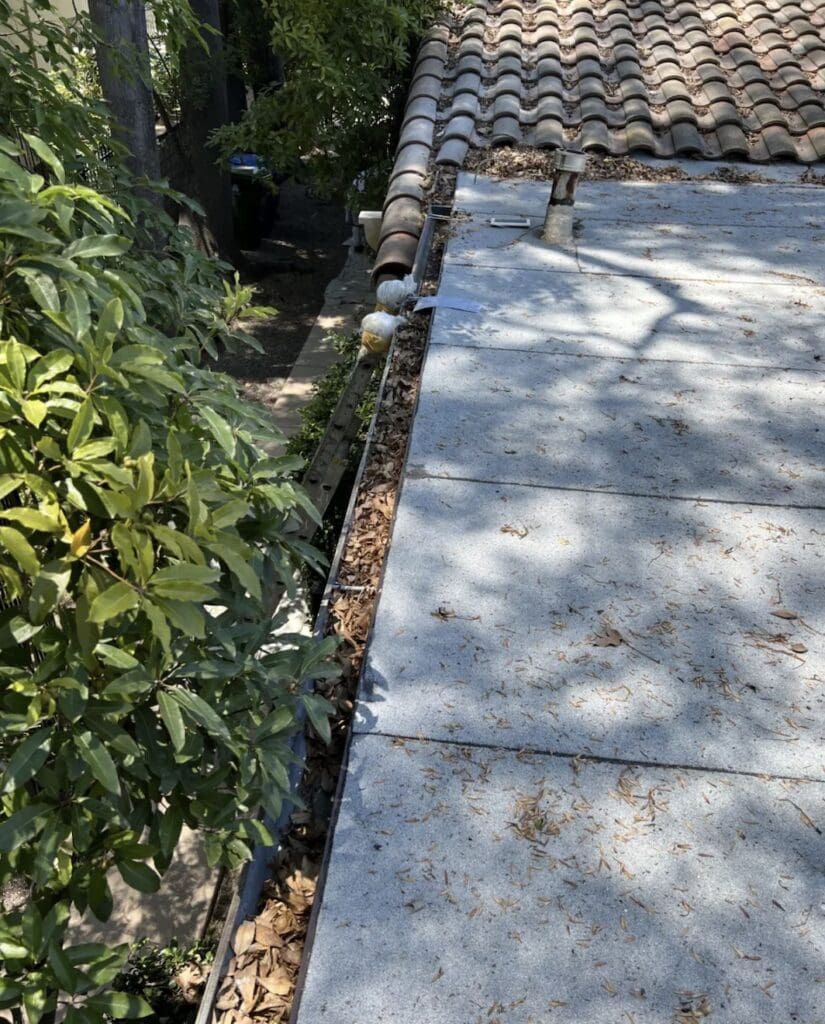
Keep these roof maintenance tips in mind when you direct your home service professional to check your roof. All Los Angeles Painting Company, Inc. 310-470-9218 provides home management services. We do the dirty work so you don’t have to.
https://alllosangelespaintingcompany.com/2024/10/home-maintenance-checklist-items/
